Economic forecast projects Washington to see nearly a billion less in revenue over four years

OLYMPIA – Strapped for cash and searching for ways to cut spending, the job for budget writers in Washington became that much more challenging Tuesday after an updated economic forecast shows the state will bring in $845 million less over the next four years than it previously projected.
During a meeting of the Washington State Economic and Revenue Forecast Council, Dave Reich, forecast council executive director, said the updated forecast shows the decline in revenue through 2029.
“This change reflects lower actual revenues and a generally lower forecast for Washington personal income, employment and building permits that likely mean lower revenues in the future compared to last fall,” Reich said in a statement.
The drop is split over the next four years, with forecasts showing the state expects to collect $71 billion in revenue between 2025 and 2027, a decrease of $479 million from the last forecast in November, and then collect $76.4 billion between 2027 and 2029, a decrease of $420 million.
According to Reich, the drop in revenue is partially due to a drop in sales and business and occupation tax income.
“The latest revenue forecast confirms that our financial outlook remains challenging,” K.D. Chapman-See, director of the Office of Financial Management, said in a statement. “OFM remains committed to supporting Governor Ferguson’s efforts alongside the Legislature to develop sustainable solutions that keep essential services like education, health care, and public safety running effectively and ensure the well-being of all Washingtonians.”
The updated revenue forecast exacerbates a troubling financial outlook for the state, with the governor recently estimating it faces a $15 billion budget deficit over the next four years. The estimate, which came as Gov. Bob Ferguson announced a plan to cut $4 billion in state spending, came ahead of Tuesday’s announcement.
Following Tuesday’s announcement, Rep. Timm Ormsby, D-Spokane, chair of the House Appropriations Committee, told reporters the new forecast “makes it that much more difficult for us to balance.”
During his remarks, Ormsby said that lawmakers are still “modeling what it’s going to take” to fund state programs while retaining a “healthy enough” reserve to retain the state’s bond rating and credit.
“We’re going to have to find more savings, and we’re going to have to fine-tune the revenue to balance and have reserves,” Ormsby said.
Identifying cuts, Ormsby said, has been somewhat of a “crap shoot and a guessing game.”
“We don’t want to cut to the bone, but we also know that we have to make reductions,” Ormsby said. “This just further quantified the reductions.”
In a statement following Tuesday’s announcement, Ormsby said, “House Democrats are taking a balanced approach to reducing the budget where we can and addressing our regressive tax structure to ask the wealthiest in our state to help us keep people alive.”
Democratic lawmakers will release their budget proposals Monday, with talk of new revenue streams likely to heat up in the coming days and weeks.
During a media availability Tuesday morning, Speaker of the House Laurie Jinkins, D-Tacoma, and Senate Majority Leader Jamie Pedersen, D-Seattle, said constituents had told them during town halls over the weekend that they desired “progressive revenue.”
“That was kind of the theme of many of our town halls, if not all of our town halls, in some way, shape or form,” Jinkins said.
Progressive revenue, Pedersen said, are taxes that try to “rebalance our tax code, so that we’re no longer 49th best in the country, where low-income and middle-income people pay a disproportionately high percentage of their income to support state and local government.”
Sen. June Robinson, D-Everett, who chairs the Ways and Means Committee, said in a statement Tuesday that the updated revenue forecast “reinforces the need for a balanced and sustainable approach as we finalize the 2025-27 operating budget.”
“Throughout this process, we have been focused on making thoughtful, strategic decisions that protect essential services and put the state on a stronger financial footing,” Robinson said. “The proposal we release next week will reflect that commitment, ensuring stability now and in the years ahead.”
Last week, Republicans in the Senate unveiled a spending plan they say proves the state can adopt a balanced budget without increasing taxes. Following the updated revenue forecast, Sen. Chris Gildon, R-Puyallup, said in a statement, “Legislative budget writers should take heed and show restraint going forward, especially with the uncertainty about actions at the federal level that could affect our situation.
“The smart approach is to avoid new and higher taxes, limit new spending to core priorities like K-12 and public safety, preserve social services, and protect the rainy-day fund.”
Senate Minority Leader John Braun, R-Centralia, said during a media availability Tuesday that Republicans plan to “push back on taxes because they’re bad for people across the state.”
Braun added that “the people of the state of Washington expect the Legislature to live within its means.”
The forecast did offer a silver lining for lawmakers, with the updated transportation budget showing an increase of $284 million in projected revenues through June 2029. According to the Office of Financial Management, the increase is largely tied to higher projections for the motor vehicle fuel tax and ferry revenue.